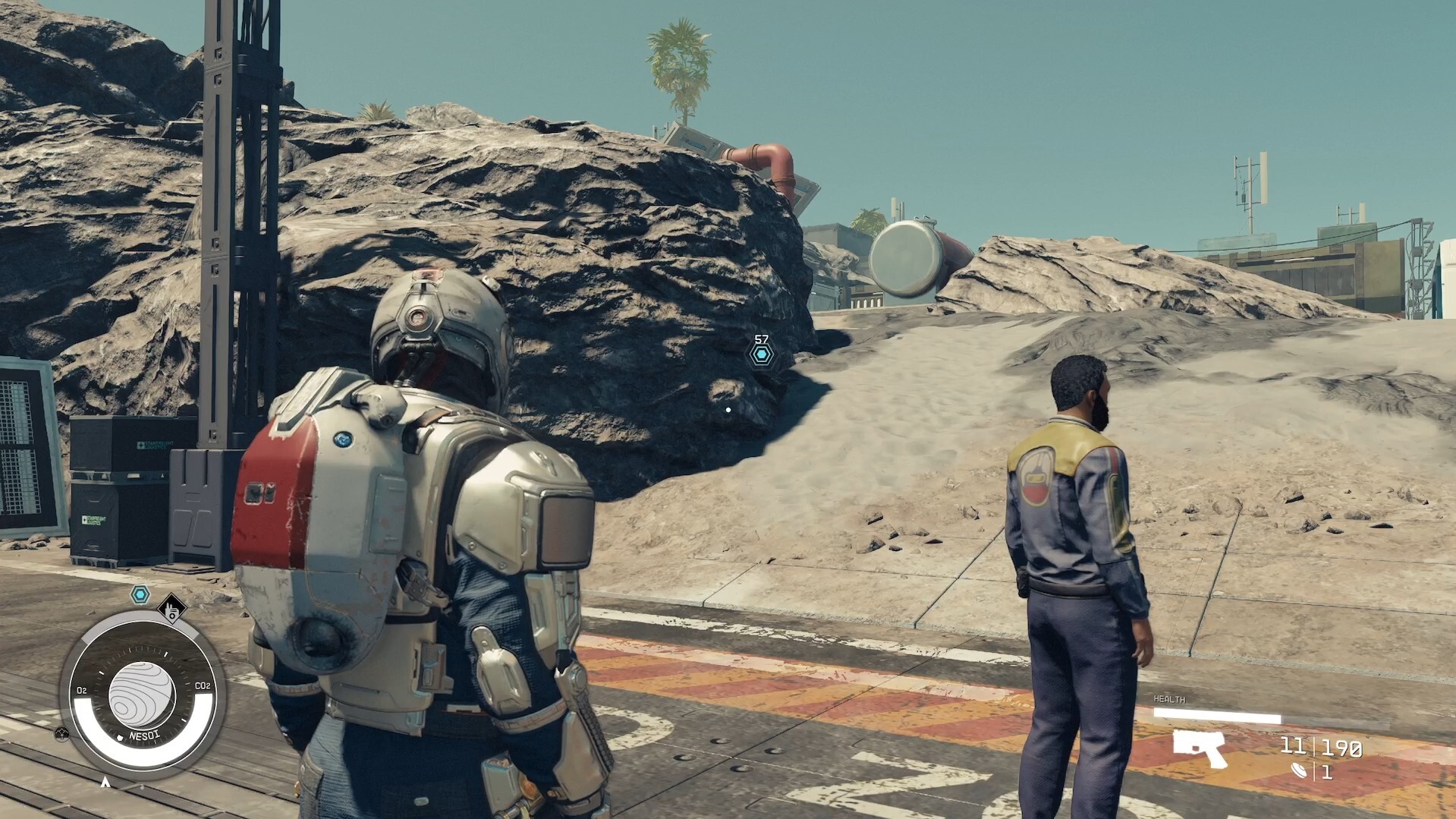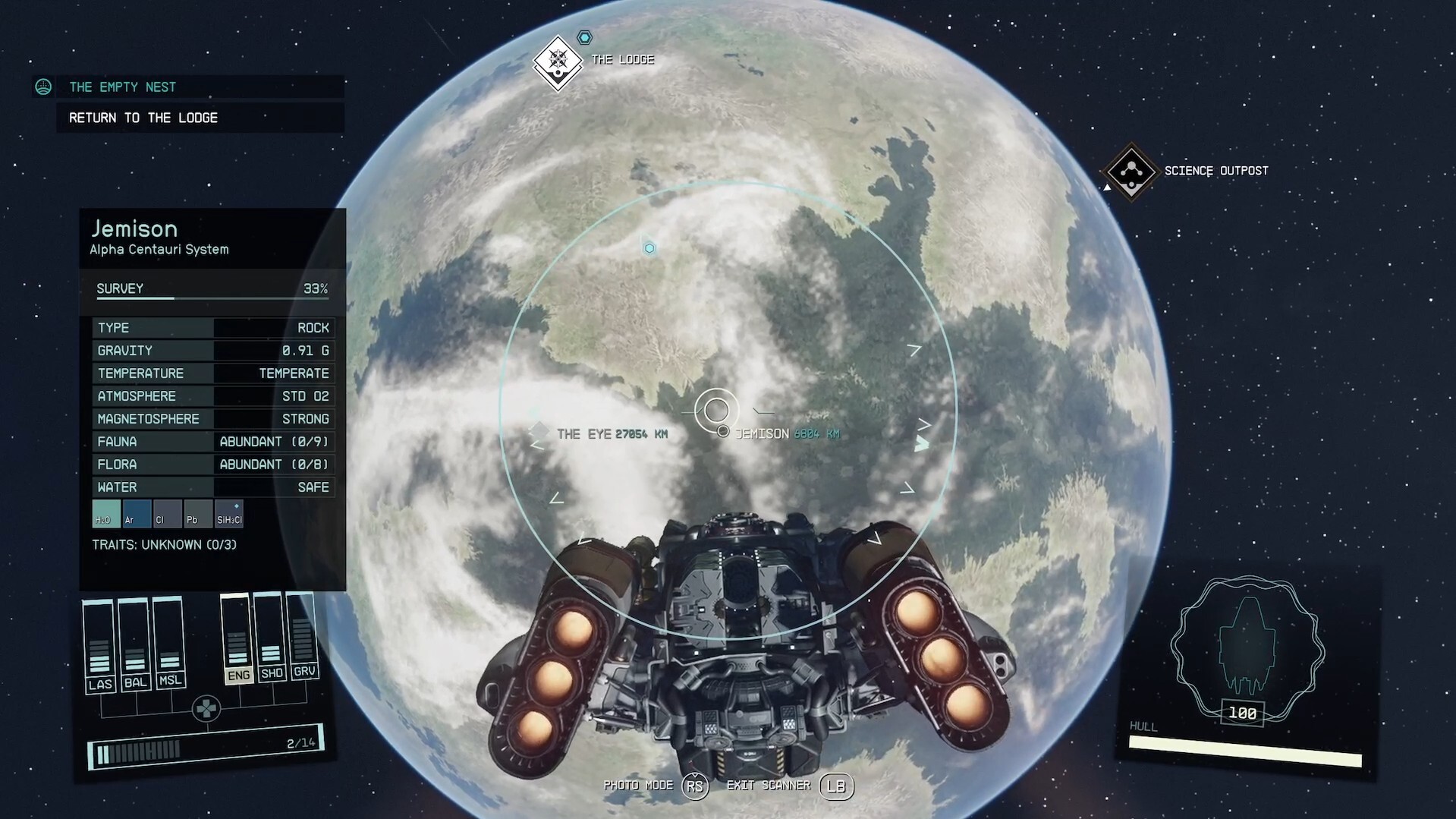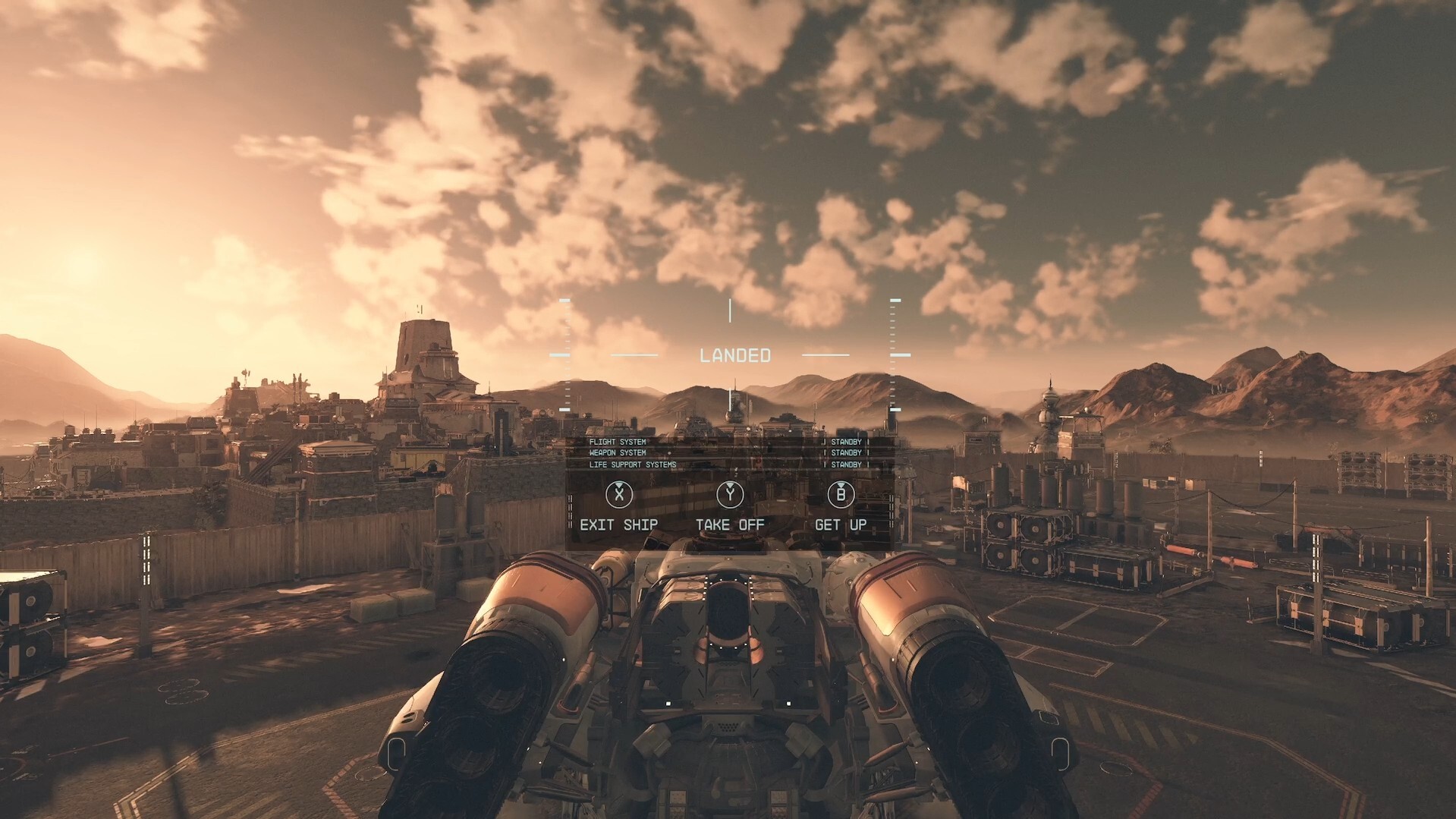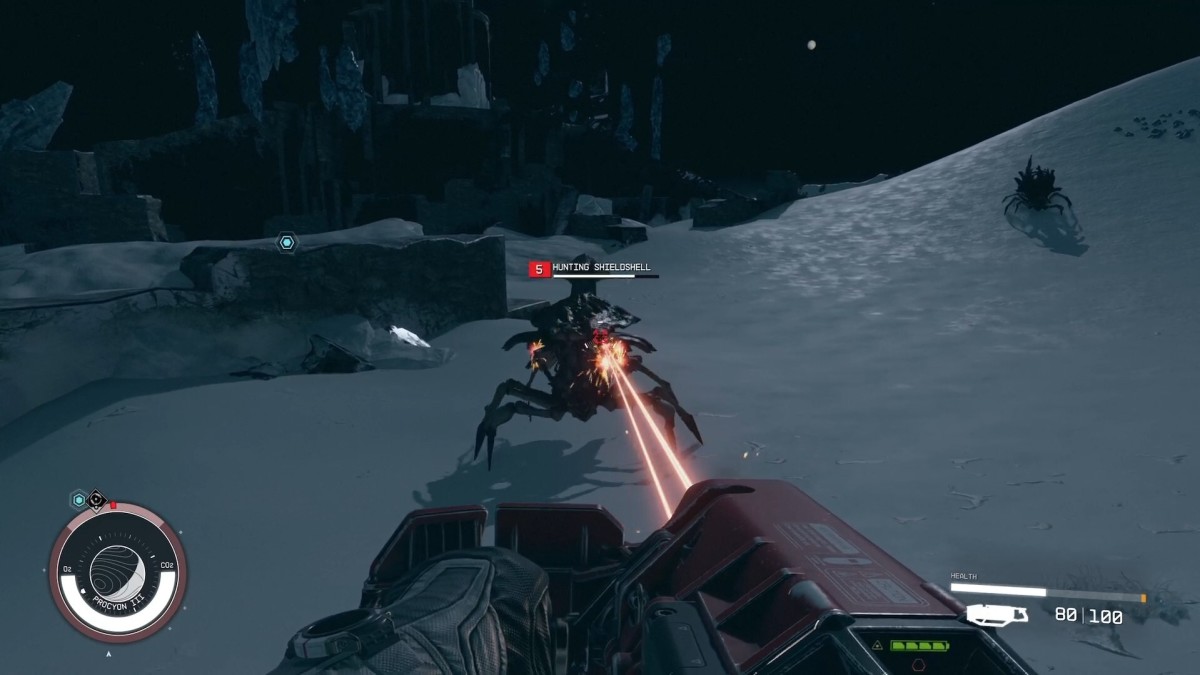Starfield review – an Xbox exclusive worth buying a console for

It’s typical. You save the galaxy and they throw you in jail. I just wanted to talk to a guy, but my hand darted out and stole his spoon, and now I’m doing time for spoon crimes.
A lesser person would swing into a rage, but consider this: it’s very funny. The bizarre things that can happen as a result of dozens of overlapping systems are just a part of a Bethesda game’s charm.
My first was Morrowind. It promised an expansive world where you could do whatever you wanted, so long as no one catches you stuffing their worldly goods into your burlap sack. In reality, this meant getting spanked by a mudcrab for ten hours before getting merked by catboys for another 60, but once it clicked, it was a revelation.
Starfield will open the eyes of a new generation of players. No one else makes games quite like this.
There’s so much to see and do that it’s almost overwhelming. One minute you’re helping miners solve a labor dispute, the next you’re tracking a dangerous bounty, and halfway through that quest, you’re sidetracked by a little corporate espionage for a coffee shop. People will still be discovering things years down the line.

Starfield is a Bethesda game in every way. If you’re going into it expecting something like No Man’s Sky, you’re going to be disappointed. It’s Skyrim in space, which is exactly what I hoped it would be.
You can land on and explore hundreds of planets, but you’re tethered within a certain square mileage from your ship. This could be a game engine limitation, but it’s just as likely a way to give modders the space to create their own towns, cities, and stories across the galaxy, considering how important the modding scene is for all of the studio’s other titles.
In my 80 hours with Starfield, I must have landed on about four random planets just to watch their moons and planetary rings ebb and flow in the black sky. There are around 30 planets that are worth your time, with beautiful, hand-crafted towns, cities, outposts, farmsteads, and more. That’s not including the staryards and space bases you can find out there in the infinite. It’s like walking around a living art exhibition – every gunmetal corridor and grimy living space is packed with detail. Every room, every computer terminal, every named person, and every fictional corporation has some kind of story to discover.
Even by the end of the game, I was still seeing new things. It has that tactile quality of other BGS games, too, where almost everything can be manipulated or picked up, from the darts in a dartboard to the spoons in a police officer’s cutlery drawer. There’s so much stuff, and before you know it, you’re over-encumbered because you’re carrying 200 succulents.
Any concerns that the game would feel empty were unfounded.

There are ramshackle frontierships and farms straight out of Red Dead Redemption. There’s a five-star holiday resort on a tropical planet. There’s the glowing city of Neon, a fishing rig on a water planet, where the poor sleep in crates, the criminals operate out of dingy warehouses, and the corporations rule over it all from huge towers overlooking the cyberpunk streets. When you land in New Atlantis, ship technicians run up to your vessel and make repairs as you stare up at the gleaming skyscrapers dominating the skyline, catching the sun on their polished glass surfaces. People comment on your clothes, your ship, and your deeds. The world shifts and changes because of the events that unfold. Every planet has its own timezone and gravity conditions. It’s a stunning achievement.
Space exploration isn’t quite as strong. I wish it were weirder. I wish there were black holes and quasars, dying suns, and more derelict ships. I wish there was a reason to explore the cosmos besides just traveling from point to point – especially as landing and docking are automated and the smuggling system is underbaked, relying on a percentage chance over something mechanical, such as silent running your ship to avoid detection.
Piloting your ship is a surprisingly small part of the game, but you’ll still find yourself spending every space dollar you earn on upgrading your personal war machines.
You can buy a bunch of prefabricated ships, or you can directly upgrade components on your vessel, and then there’s manual building, which I adore. By the end of the game, I had a leviathan with point defense autocannons in every direction, a brig, a canteen – the works. Big Betty, she’s called.
My only real complaint about the ship-building system is how the alerts work. If your ship is too big, it’ll tell you it’s “too wide, high, or long”. Which is it? If there’s a component you can’t use or isn’t fitted properly, it’ll tell you that, but it won’t tell you which one. It’s irritating that you have to diagnose the problem by process of elimination, rather than the game simply highlighting the problematic component.

This kind of small annoyance crops up in lots of little corners of the game, but the ambition and execution of the big picture make them easier to forgive. The lack of a local map for each location is probably my biggest wishlist feature. This could be an intentional design decision to immerse you in each location, but it leaves you beholden to waypoints that are prone to sending you on a wild space goose chase. There’s also no way to group quests by location. Of course, these could all be improved in a couple of patches.
There’s also some of the traditional Bethesda jank. Random NPCs sometimes stalk your conversations like a haunted mannequin. The camera might cut to a person speaking from another room, zooming in on a desk plant instead of a face. It didn’t impede my enjoyment but don’t go into it expecting fancy camerawork and dramatic cutscenes.
When you’re not talking to people, you’re usually shooting them. It’s the best combat Bethesda has ever done, thanks to an arsenal of punchy and impactful weapons. My personal favorite is a massive assault rifle with a square mesh of lasers that spits out 20 bullets at a time.
Jetpacking over someone’s head before shooting their O2 pack, sending them careening into the sky, never gets old, and I appreciate how much of the environment reacts to your shots, with gas canisters fizzing and shooting away, everyday items pinging around rooms, and fire extinguishers exploding into a plume of smoke.
On the rare occasion where the action shifts to zero-G, you’re forced to tap into a new layer of spatial awareness so you can orientate yourself in omnidirectional encounters. Fill someone with bullets and they’ll float in place as their weapon is propelled away from their corpse. Keep squeezing the trigger and you’ll fly backward from the force of the shots.

Going to space and shooting guns is a bit depressing, but this is a story about how depressing humans are – how doomed we are to be cursed with self-awareness, and how condemned the universe is for having this inquisitive, curious, and self-obsessed species in it. But there’s also optimism and humanity – the cast of characters you pick up all share this starry-eyed, idealistic vision of space travel that you can’t help but feel infected by. From Cissy Jones as Andreja to Elias Toufexis as Sam Coe, these are the most fleshed-out companions Bethesda has ever created.
Of course, you could ignore your companions completely. Once you’re out in the world, it’s completely up to you what you engage with. Even after 80 hours, there are plenty of things I haven’t messed with. I barely touched outpost building and resource gathering, or researching new technology and crafting weapon and armor mods. I got an apartment, but I didn’t bother with any interior design.
If you want to be an interstellar pirate who spends their time scouring the galaxy for victims, you’re welcome to play that way. If you want to be an explorer who searches for new flora and fauna, that’s on the table too. There are bounty missions and courier quests, and you can even turn your ship into a spacefaring taxi service. Almost every facet of the fantasy is served here, besides one glaring omission: spacewalking.
Bethesda has also done something smart with how it handles New Game+ here, giving you plenty of reasons to strap yourself into the captain’s seat and chart a new course through the Milky Way again once you’re done with the main story. With expansions and DLC on the horizon, I can’t wait to see what the future holds for the studio’s best game so far. Welcome to a new golden age in space exploration, but keep your hands off the cutlery.
Score: 9/10
- Visuals: 10/10
- Story: 8/10
- Audio: 10/10
- Gameplay: 9/10
Starfield technical breakdown
I spent a bit of time playing the Xbox Series X version of Starfield, which looks and runs well at 30fps, but switching to the PC version was like getting a next-gen upgrade. On my RTX 3090, Starfield runs like a dream, hitting 60fps at 4K on Ultra settings without breaking a sweat. It’s the most polished game Bethesda has ever put out.
Of course, there are some bugs, as there always are in games as complex as this. The worst bugs are localized around the fast travel mechanic, which is required to leave a planet if your ship decides to fly away (which it can if it’s too large). Very rarely, the game doesn’t register that you’ve ended combat, which locks the ability to fast travel, forcing you to reload an older save.
I’ve also had some strange scripting bugs where NPCs have gone to locations where they shouldn’t be and come under attack, which somehow made an entire location turn hostile toward me. Again, this was fixed with a reload so take this as a reminder to save often and in various different slots in case you need to revert.
Version tested: PC and Xbox Series X
